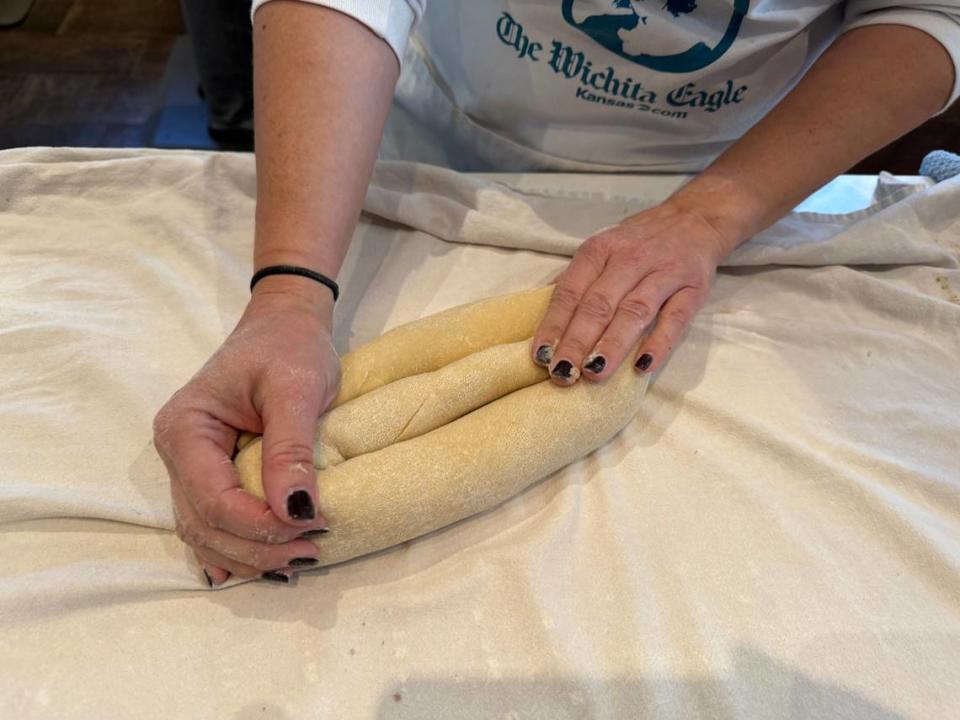Wichita woman diligently prepares her grandma’s famous Croatian povitica every Christmas
For as long as I’ve known my friend Katie Grover, I’ve known that I’m lucky if I get even one slice of the Croatian povitica loaves she painstakingly assembles each year in the weeks leading up to Christmas.
Even her own siblings know that they get only half of a loaf. The only one who gets a whole loaf — besides Katie’s own husband and kids — is Uncle John, and that’s only because he’s “a super good human.”
If your family doesn’t have Slavic roots — or if you’re not familiar with the Strawberry Hill neighborhood in Kansas City — you may never have heard of povitica, pronounced pov-e-tee-za. It’s essentially a nut loaf prepared so that, when it’s cut, it presents layers and layers of rich, nutty swirl.
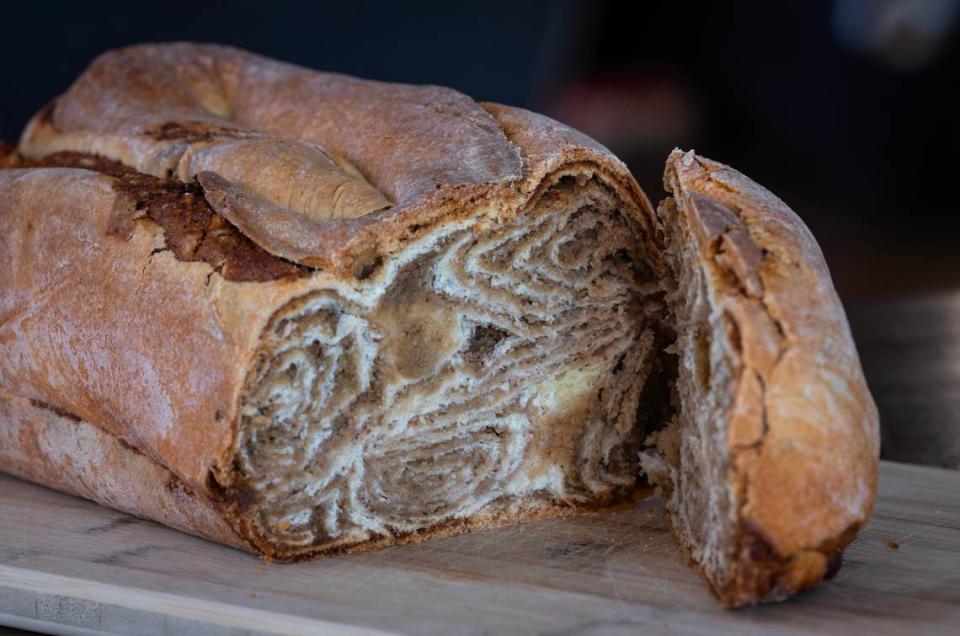
In many families, povitica recipes are passed down from grandmother to grandchild for generations, and depending on the region the family hails from, may contain different fillings. Apple is another popular variety, and Kansans may be familiar with Strawberry Hill Baking Co. in Merriam, a bakery that sells the loaves in flavors like chocolate, strawberry cream cheese, cranberry walnut, lemon, poppy seed and more. A single loaf from Strawberry Hill goes for $38.99.
Those who prepare their own povitica usually do so around Christmas time. Povitica was a central part of Katie’s childhood — made every year on Christmas morning by her grandmother, Genevieve Slack Meditz, who died in 2013.
Grandma Meditz’s parents were Joseph Slak (later changed to Slack), who was born in 1891 in Slovenia, and his wife, Ljudmilla Majerle Slak, born in 1892 in Croatia. She immigrated to the United States in 1904. Joseph did in 1910.
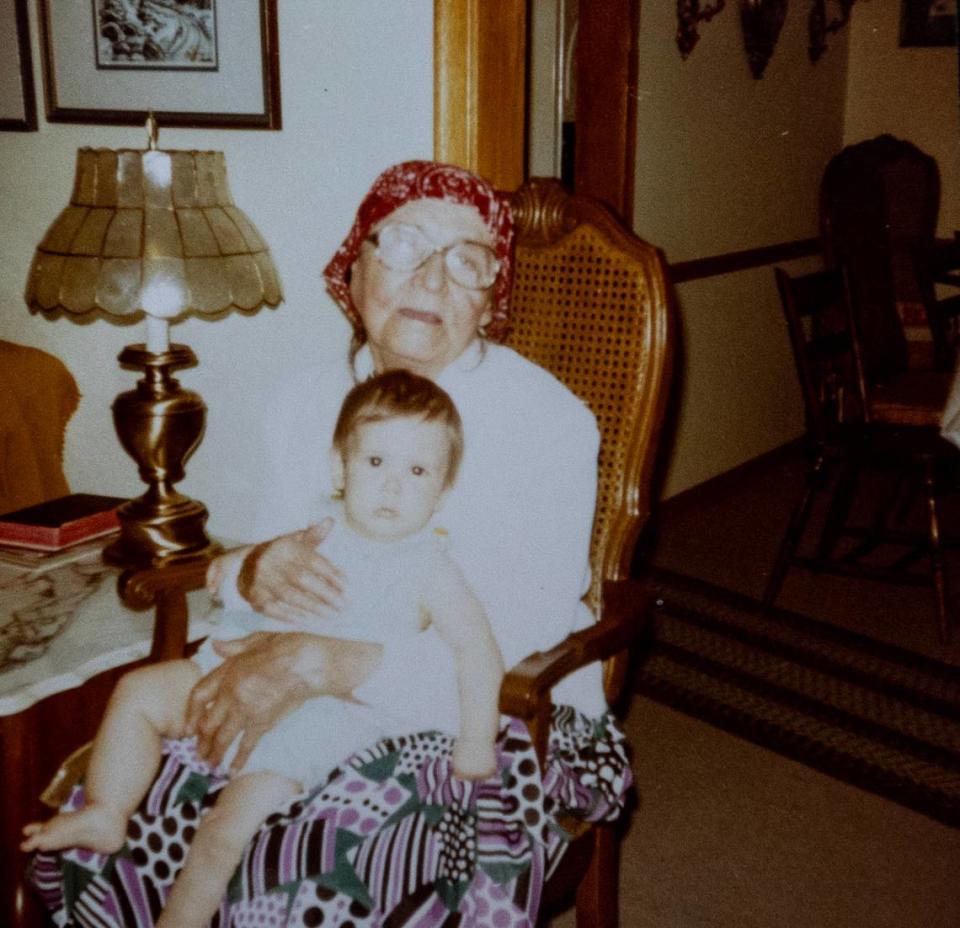
Though Grandma Meditz would go on to marry a Swede — Katie and her siblings grew up in Lindsborg — she held on to many of her family’s Slavic traditions, especially povitica baking. When Katie graduated from Bethany College and moved to Kansas City in 1999, Grandma Meditz insisted she learn how to make it.
This year, I decided to go watch Katie prepare this magical bread that I so crave and have such a hard time getting — not only because she guards the fruits of her labor closely every year but also because I’m generally too cheap to pay Strawberry Hill prices.
Anyone who knows Katie knows that cooking isn’t exactly her forte. Her husband, Travis, is the main cook in the family, and she’s not the least bit hesitant to admit that fact. But when it comes to povitica, she’s a master. It was fascinating to watch her assemble and manipulate the dough, which I consider a bit of an advanced kitchen skill.
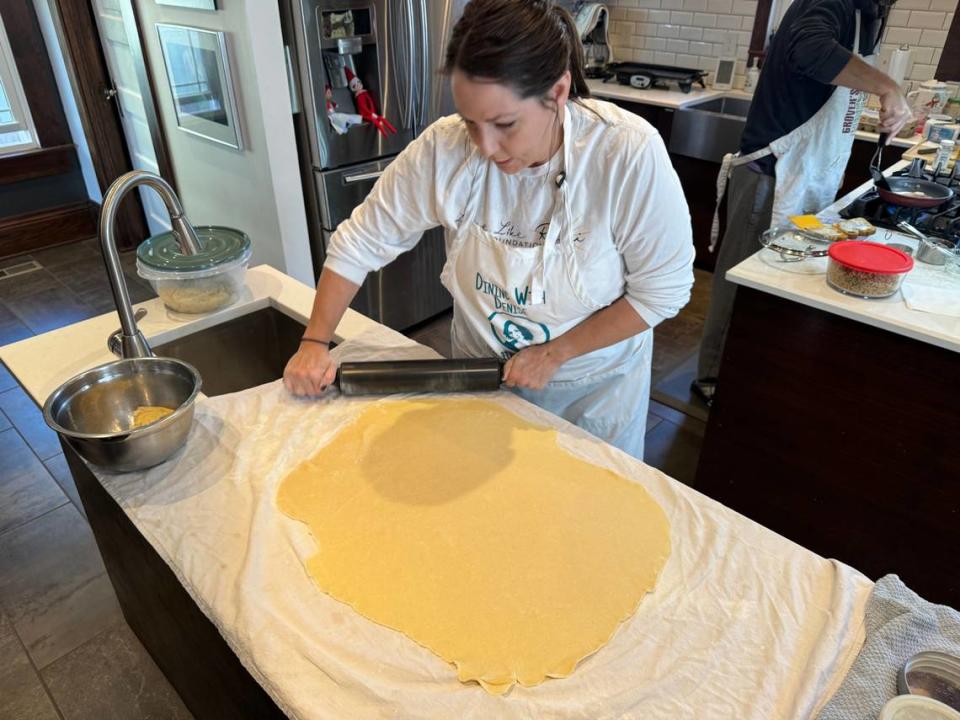
But she recalls that her grandmother didn’t ask so much as tell Katie she’d been chosen to carry on the tradition, and Katie took the job seriously. She’s been making at least four loaves every year for the past 23 years: Uncle John gets one to himself. Brothers Andy and Tim, sister Sara and mother Genevieve each get a half loaf. And Katie shares hers with husband, Travis, daughter Lillian, 13, son Harrison, 10 — and the few povitica-loving friends who manage to talk her out of a slice or two every year.
It usually takes Katie a full weekend to make the four loaves of povitica, which when finished weigh in at a whopping four pounds each.
Katie, I predict, has many years of povitica-making in front of her, but she’s already thinking about who will carry on the tradition. She’s hoping her daughter will, but “Lils,” — who helped her mom when she was a kid — is significantly less interested as an eighth grader.
“I’ve told her, though, at some point, either you’re going to start making it or you’re not going to have any,” Katie said.
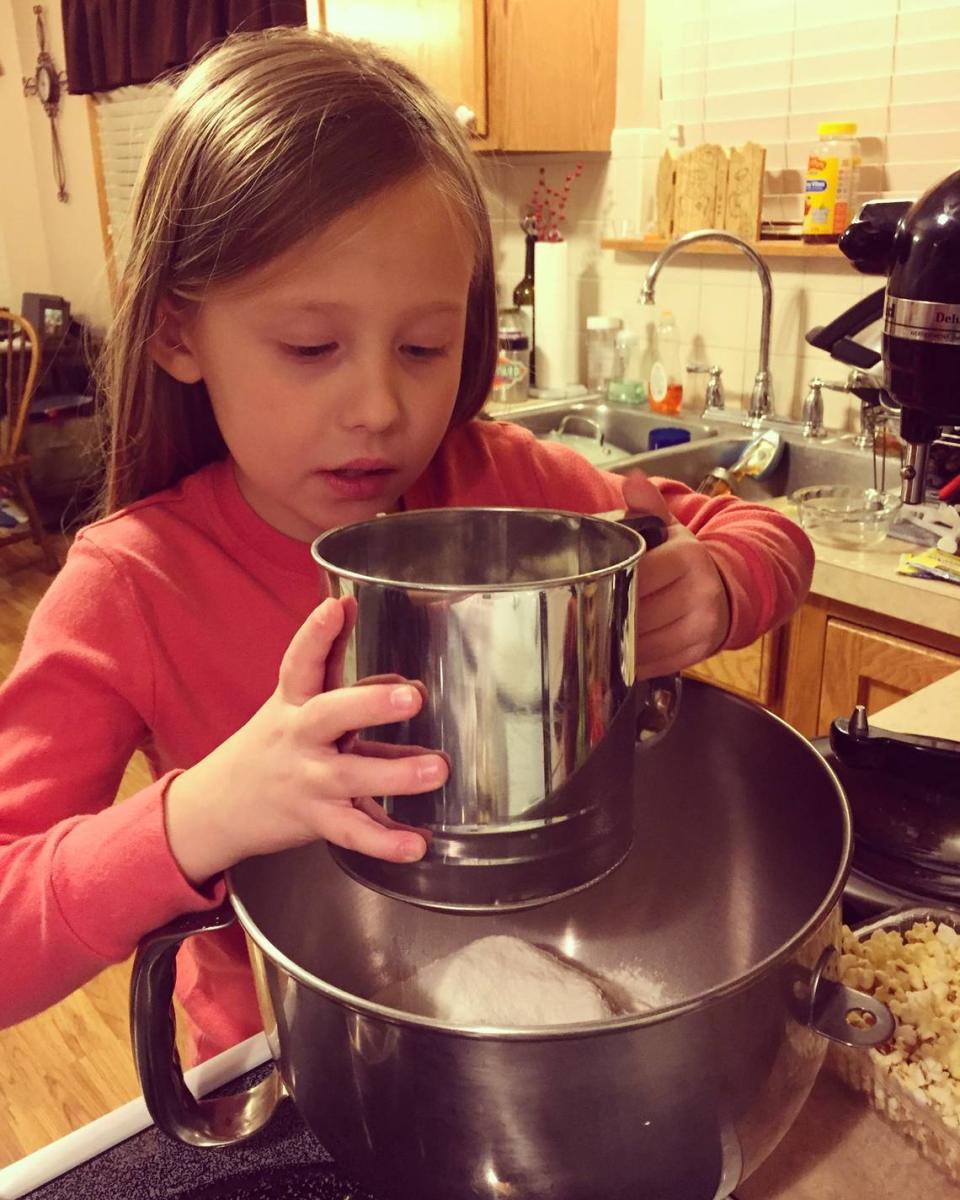
Now that I’ve seen the whole process, I’m determined to make my own loaf. My kitchen, I realized, was lacking only a few key tools, the most important a meat-grinder attachment for my KitchenAid mixer needed to grind the walnuts into a fine paste.
Povitica assembly also requires a very large flour-sack towel, which is needed for rolling out — and then rolling up — the filling-covered dough. Katie’s towel is 42 x 29 inches, though one a little smaller will work, she says. Fortunately, I found one of these in the back of my towel drawer.
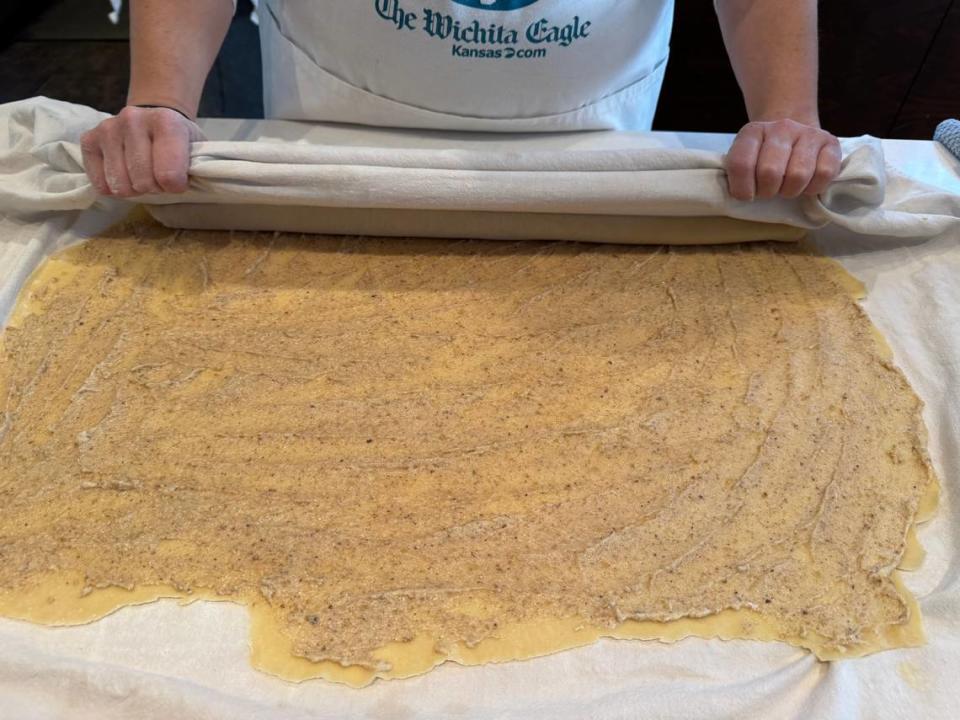
Finally, Katie bakes her loaves in industrial-sized bread pans passed down by her grandmother. Hers is 11 inches long by 6 inches deep, and she loaned me one. But I’ve seen such pans in restaurant supply stores.
What makes povitica baking so involved? For one, lots of waiting is required for the dough to chill then rest. Ingredients must be cooled. And rolling dough is a skill that requires practice. Otherwise, I think it’s doable. And definitely worth it.
If you’re brave enough to try making your own povitica, Katie shared Grandma Slack’s recipe:
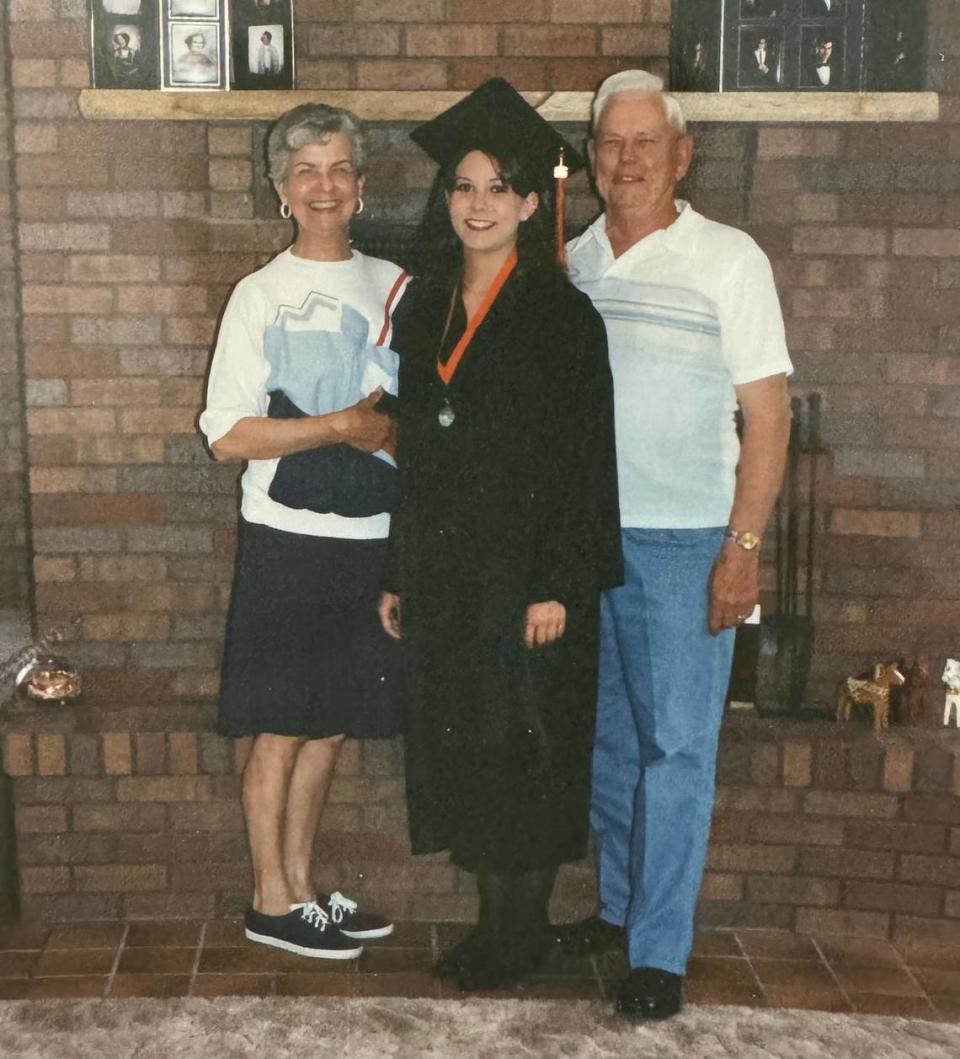
Grandma Slack’s Povitica
Dough:
1 cup butter
1/2 cup milk
3 cups flour
1/4 teaspoon salt
2 tablespoons sugar
3 egg yolks
2 envelopes dry yeast
1/4 cup lukewarm water
Filling:
3 cups walnuts, ground
3 tablespoons sugar
1 teaspoon vanilla extract
1/2 cup milk
3 egg whites
1 1/2 cups sugar
Directions:
For the dough: Add butter and milk to a saucepan then melt. Cool. Dissolve yeast in water. Sift flour, salt and sugar. Stir egg yolks into milk mixture then add to flour mixture. Add yeast mixture then mix well. Refrigerate at least 2-3 hours.
For the filling: Grind nuts then combine with 3 tablespoons of sugar, milk and vanilla in sauce pan. Mix over low heat until toasted then cool. Beat egg whites until stiff, gradually adding 1 1/2 cup sugar. Fold nut mixture and eggs into a paste.
To assemble: Roll out 1/2 of the dough into a rectangular shape on a large flour-doused flour sack towel until thin. Using the edge of a spoon, gently spread a thin layer of walnut mixture all the way up to dough edges. Using the towel, roll up dough, then fold in 1/3. Repeat with the second 1/2 of the dough and nut mixture.
Grease a large metal loaf pan with shortening then dust with flour. Place first dough into pan and spread top with remaining nut mixture. Cover pan with towel and let rest for 20-30 minutes.
Bake at 350 degrees for 1 hour and 15 minutes. Let bread rest 15 minutes before removing from pan.
